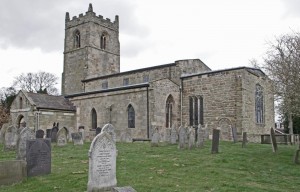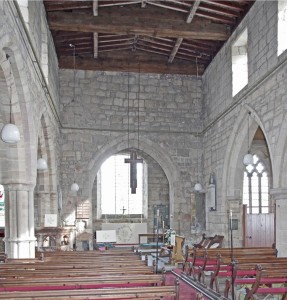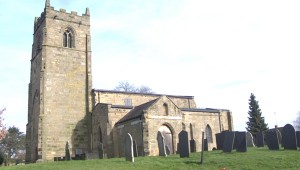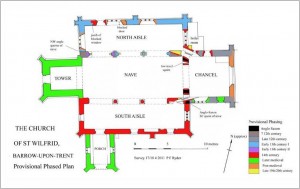The date of the consecration of the first Church at Barrow on Trent is not known but it certainly pre-dates the Norman conquest.
The church displays its pre-conquest origins, including Anglo Saxon masonry, and has had additions and extensions throughout the centuries until the last major work in the 15th century when the roof of the nave was raised to allow the clerestory windows to be added.
The tower was also extended and bells installed.
The church of St Wilfrid has an interesting history, as it is one of the very few remaining Knights Hospitallers outpost churches in the country, having been used as a base for the raising of funds for the Knights. There are two ‘Black Death’ pits that have been located in the churchyard and, although there are no records of this period available, the toll on the population must have been catastrophic at a time when the parish contained far fewer inhabitants than today.
Whilst Barrow was mainly a relatively poor farming community, several wealthy families have made their mark upon the development of the Barrow parish. In the early 12th century the Bagpuize family, one of those that arrived during the Norman Conquest, gave the early church building and some land to the Order of St John (the Knights Hospitallers).
The monks of the Knights Hospitallers lived in a house in the outlying hamlet of Arleston and were responsible for the further development of the Church of St Wilfrid. The families of Sale and Beaumont also played a significant role in the development of the parish.
An historic building assessment of the Church of St Wilfrid, Barrow-upon-Trent was carried out by Peter F Ryder B.A, M.Phil, F.S.A in April 2013.
Below you can see a provisional phased plan of the building.




